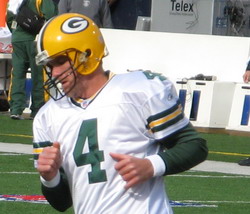I am sharing this with you today not to boast or brag, but to give you an example that you can use to promote yourself and gain credibility as an expert in your field. If you are squeamish about self promotion and prefer to let your work speak for itself you will forever be broke and toll in obscurity.
I encourage you to accept the challenge of writing your own story and promoting it to any and everyone. Doing this will help you become a person of influence and once you are seen by your clients, buyers and prospects as a person of influence they will more readily accept your advice, proposals and solutions. If you want to be taken seriously you must be bold and tell people how great you are - even if that goes against what your Mother may have taught you. As Judge Ziglar has said, "Timid salesmen have skinny kids."
Featured Article
Who Is Steve Clark and Why Should You Listen To Him
Steve is a scrapper and an overcomer. Early in his sales career he struggled financially, was dead broke, had his water cut off for lack of payment , has almost been bankrupt and he has been sued by a competitor who tried to put him out of business. But he has always "reloaded and fired again", no matter the struggle or no matter the circumstance. Perhaps his great asset is that he doesn't know the word quit.
What Is Steve's Background
Steve grew up in a modest military family where his father was an Army sergeant and his mother was a waitress. Neither of his parents graduated from hIgh school. From the 7th grade through his high school graduation his entire four person family lived in a 72 foot long by 12 foot wide house trailer.
He certainly has never been fed with a silver spoon.
Everything he has achieved - and he has achieved a lot - has come because he is not a quitter and has persisted and chased his dreams while staring adversity in the face.
Steve's introduction to selling came at age 11 when he began selling flower seeds and greeting cards door to door for Boys Life magazine. As a young door to door salesman he experienced a lot of rejection and failure but that didn't deter him from winning the prizes and awards that were advertised in the magazine. At thirteen, he began selling and delivering 73 daily newspapers on his bicycle. In addition to selling and delivering, each week he had to go by his customers house and collect either the weekly or monthly subscription fee. Here he gained more experience collecting and soliciting door to door. In high school he sold more candy and raised more money for the prom than any of his other 248 junior classmates.
After high school, Steve attended college at the University of South Carolina where he obtained a Bachelor's and Master's degree in education. After graduating he worked for 5 years in public health for the state of South Carolina. This was a short lived career that set the stage for his entry into the world of professional selling in 1980.
What Real Sales Experience Does He Have
Since 1980, he has sold pest control services, pots and pans, security systems, vitamins, laundry detergent, life and health insurance, annuities, mutual funds, stocks and bonds and raised over $1,000,000 for schools in Northwest Florida.
Steve is a self taught sales person who has read hundreds of sales, management, and psychology books, listened to thousands of hours of audio recordings, attended scores and scores of sales seminars and most importantly made over 10,000 face to face or telephone prospecting calls.
He is the ultimate Sales Warrior.
The Big Break Through
In 1996, Steve was making $53,000 per year as a salesperson and he had over $40,000 of credit card debt. Taking out a second mortgage on his house and borrowing $10,000 from his Mother, he set out into the world of sales and marketing consulting with zero clients, zero income, a wife and two daughters aged 10 and 13.
It was a crazy gamble and one that very, very few people would have the guts to do. But Steve believed in himself and knew that he had the desire and work ethic to do whatever it would take to achieve his dream of financial freedom and total control of his life and his destiny.
It was an outrageous leap of faith and a gutsy decision that has paid HUGE dividends!
What Were The Results
In his first 12 months in business Steve increased his yearly income to over $110,000. That was more than double what he had previously made in any of his 16 years in sales. Using strategies, tactics and techniques that he was developing and implementing , the following year he doubled his income again to over $220,000.....and in his 3rd year in business he increased his income again to over $353,000. That's a 700% increase in income in 3 years.
Fast Forward To Today
Today, as CEO of New School Selling, he headsan international business development and marketing firm that consults and coaches thousands of sales executives and business owners annually in Australia, Canada and the US. He routinely gets paid $9400.00 daily to consult and deliver training for his clients. In 2007, his consulting fees were in excess of $500,000.00.
He is the author of the audio books:
He is a guest columnist of Radio Ink magazine and is a frequent national and international speaker.
In addition to his duties as CEO, he is a US Coast Guard Captain and runs a fishing charter business out of Navarre, Florida where many nights you'll find him offshore hauling in Yellow Fin Tuna.
Today he earns more in a month than he used to earn in a year and the thing he loves to do more than anything else in this world is to teach other sales executives how to do the same.
Why Should Any Of This Matter To You
That's a fair question. If you have the desire to excel in the sales profession Steve can help you double or triple your income and obtain a lifestyle you have never imagined. He has learned through the "school of hard knocks" and can help you avoid the pitfalls and wasted time that he had to endure to learn the lessons necessary for sales success.
As A New School Student What Can You Expect
When you become a New School student you will be given a tested and proven system that has a twelve year track record of producing tens millions of dollars of revenue for his clients.   ;
Specifically, New School Selling strategies, tactics and techniques will help you:
1. Shortening the sales cycle
2. Save tons of time that is wasted with non qualified buyers
3. Improve closing percentages
4. Eliminate "free consulting"
5. Increase the number of qualified leads and prospects
6. Weeding out non buyers earlier
7. Reduce discounting in competitive situations
8. Improve negotiation strategies
9. Dramatically increasing your income
You will not have to reinvent the wheel. Simply learn the system, put your foot on the accelerator and take off. All of your time and energy will be spent implementing, doing and making vast sums of money.
If you are tired of hearing platitudes and worn out motivational crap then his New School Selling process will be like a breath of fresh air.
As a serious student of New School Selling you will become more bold and confident and will develop a backbone of steel. No longer will buyers be able to jerk you around and treat you like some circus animal that is expected to jump through hoops.
Not only will buyers come to respect you more, you will come to respect yourself and the profession of selling more. And, oh yea, your income will skyrocket into the stratosphere.
Warning: New School Selling is not for everyone. It is not for the lazy, unmotivated or those who think the world owes them something. But if you have a "burning desire" to become one of the top sellers in your industry it can be your ticket to financial freedom and a lifestyle that is the envy of most people.
About Steve
Steve Clark is the CEO of New School Selling, Inc., an international business development and marketing company. He consults and coaches business owners, sales executives and entrepreneurs to develop and implement more effective sales and marketing strategies that increase revenues and improve profit margins.
If you liked today's issue, you will be thrilled with Steve's sales productivity tools which will help you increase your company's sales revenues and skyrocket your personal income.
While Steve is best known as a sales expert, his greatest impact is helping business professionals develop a personal strategy that allows them to escape the "entrepreneurial trap" and live the life of their dreams.
You can learn more about Steve by watching this 4 minute video.












 We know that consumers' choices in retail stores are affected by what they see on the shelves or racks. But now come reports that their choices are also affected by how they are seen themselves. In other words, shoppers behave differently in the presence of other people.
We know that consumers' choices in retail stores are affected by what they see on the shelves or racks. But now come reports that their choices are also affected by how they are seen themselves. In other words, shoppers behave differently in the presence of other people.  There is no question that we have entered a period of economic uncertainty. And, especially as individuals and companies begin to tighten their financial belts, fear of failure might make you less inclined to implement innovative business and marketing strategies.
There is no question that we have entered a period of economic uncertainty. And, especially as individuals and companies begin to tighten their financial belts, fear of failure might make you less inclined to implement innovative business and marketing strategies.




 Even the most sophisticated Web site will underperform if you don't pay attention to the fundamentals that lead to sales. Nick Usborne believes that no site is complete without these five phrases:
Even the most sophisticated Web site will underperform if you don't pay attention to the fundamentals that lead to sales. Nick Usborne believes that no site is complete without these five phrases: 











